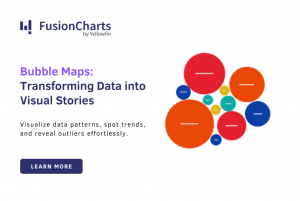Everyone hits the first base. But getting to the second base is where a lot of people are lost out. Yes, almost everyone has made use of simple column, line and pie charts at some point of time in their lives. But when your relationship with data starts heating up, the first base just won’t do.
On that note, we start our foray into second base with charting. In this series, we will discuss the basics of some not-so basic charts and their application in real-life. We will start off with the waterfall chart and then follow that up with the multi-level pie chart and the bubble chart. And probably more.
What is a waterfall chart?
A typical waterfall chart is used to show how an initial value is increased and decreased by a series of intermediate values, leading to a final value. Let’s take a simple example to understand things better. The simplest example would be an inventory audit of men’s t-shirts in a retail outlet. You need to find out how many salable t-shirts you have in hand to start the next month with. Typically, there will be some units in stock to start the month with. Along the course of the t-shirt being on display and various people trying it out, some of the units will get damaged. Some of these damaged units could be refurbished to add to the stock, and finally we arrive at the number of salable units.
Variants of the waterfall chart
The waterfall chart has a number of variants. While these variants might not do justice to the definition of the waterfall chart, but they come in very handy in some situations. Let’s consider the situation in which you need to plot your company’s annual profit. So you will show your various sources of revenue, add them up and deduct all your costs to arrive at the total profit (or loss).
Where can waterfall charts be used?
Now that you have got a hang of the waterfall chart, let’s take a look at some other places where the waterfall chart can be used effectively.- How many contracts do you have in hand at the start of a year? If you are from the construction or the legal department, you will surely identify with this. Start off with the number of contracts carried forward from the previous year, add to that new contracts you earned during that year and then reduce the contracts cancelled and the tasks accomplished. Finally, you reach the number of contracts in hand at the end of the year.
- How much did you score in an exam? So you took the GRE. Wouldn’t you like to see how many questions you answered correctly in the verbal section and how many you answered wrong? Ditto for the quantitative section as well. And you add the two of them up to get to your final score.




One response on “Second base with charts: Understanding the Waterfall chart”